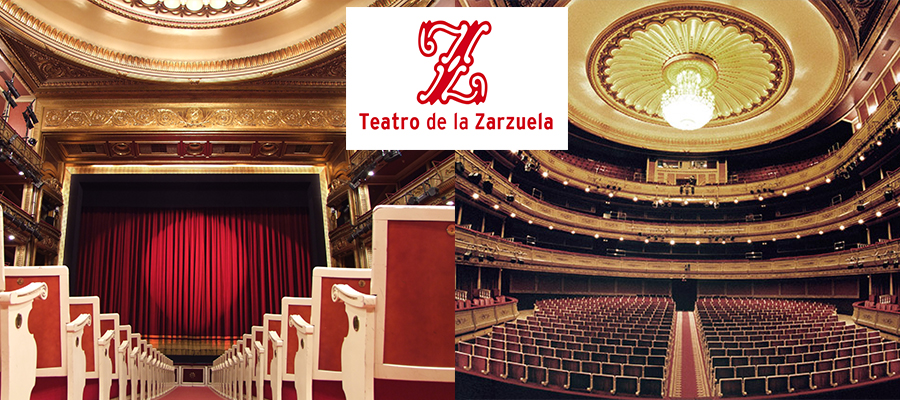
Teatro de la Zarzuela
Address: Jovellanos, 4 – 28014 Madrid, España.
Phone: +34 9 1524 5400
Web: teatrodelazarzuela.mcu.es/es/
Facebook: TeatroZarzuela
Instagram: @teatrodelazarzuela
Twitter: @TeatroZarzuela
YouTube: Teatro de la Zarzuela
Vimeo: Teatro de la Zarzuela
Review: Since its creation, the Teatro de la Zarzuela -as well as the Opéra Comique in Paris and the Volksoper in Vienna- has been the meeting point for different generations of the public and for all those who are close to Hispanic culture. In this venue, where the music of the Spanish lyrical genre has always been cultivated, the best works of its repertoire continue to be sung and heard.
It is on this stage in the Plazuela de Jovellanos that El juramento de Gaztambide is heard for the first time; The diamonds in the crown, Pan y toros and El barberillo de Lavapiés by Asenjo Barbieri; Giants and Big Heads and La Viejecita by Fernández Caballero; The witch, The small homeland and The king who raged from Chapí; Chueca’s batting; Bohemians, Maruxa and La villana de Vives; or El Caserío de Jesús Guridi, among many other authors and titles. During the second half of the 19th century and the middle of the 20th, the history of the genre and the coliseum is written by the musicians and poets, as well as by the actors and singers who, day by day, with their continuous premieres and reruns, keep the zarzuela alive. in his theatre.
As of 1984, the Ministry of Culture, as the absolute owner of the building, and through the National Institute of Performing Arts and Music (INAEM), prepares the first lyrical seasons, and in the absence of an opera house and an auditorium, hosts equally dance, flamenco, opera and zarzuela shows. In 1994 the coliseum is declared a National Monument, and four years later, after the latest architectural reforms, the venue recovers the original purpose for which it was created in 1856: Spanish poetry.
Today, the Teatro de la Zarzuela is a public theater, a treasure that belongs to us and that aspires for everyone to feel it as their own: to inhabit it, enjoy it and transform it.
This theater is today the quintessential representative of the musical legacy of all the Spains that inhabit Spain. It has always maintained its maxim of being a theater for a genre and a genre for a theatre. Because zarzuela, that beautiful and fun artistic expression, is alive and still having fun.

